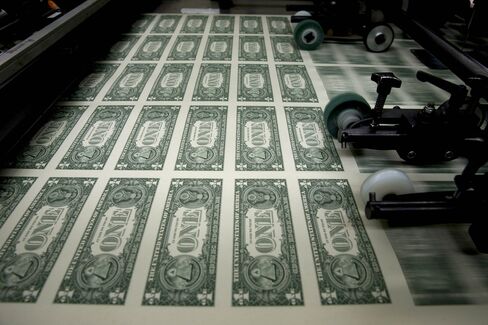 The U.S. Department of Agriculture forecast that farmers will face a drop in profit for the third straight year as persistent surpluses depress crop and livestock prices.
The U.S. Department of Agriculture forecast that farmers will face a drop in profit for the third straight year as persistent surpluses depress crop and livestock prices.
Farm net income will be $54.8 billion in 2016, the USDA said Tuesday in a report on its website, 2.8 percent less than the $56.4 billion estimated for 2015.
The hard times follow an era of record profit that peaked at $123.3 billion in 2013, when rising global demand combined with a domestic drought that crimped supplies of corn and cattle, while a virus devastated hog herds. Direct government farm-program payments are forecast to rise 31 percent to $13.9 billion in 2016 with the 2014 Farm Bill’s price-loss and risk coverage accounting for almost two-thirds of the total.
U.S. farm expenses will fall 1 percent to $376.5 billion this year, the first consecutive annual decline since 1986. ‘The drop in expenses is expected to alleviate, but not completely offset, the drop in cash receipts, and ultimately lead to tighter margins,” the USDA said in a report.
Surplus Cycle
The 2013 boom spurred farmers to boost crop and livestock production, triggering a cycle for surpluses in major agricultural commodities at the same time, David Anderson, a livestock economist at Texas A&M University in College Station, said in a telephone interview. Farmland values have dropped from all-time highs.
The U.S. farm debt-to-equity ratio will rise for a fourth straight year, indicating “a higher level of financial stress is building” relative to recent years, the USDA said. This measure “remains low relative to historical levels,” indicating the industry is “insulated from solvency risk associated with declining commodity prices” and swings in farm-asset values, the agency said.
Some farmers will work through supply gluts faster than others, with chicken and dairy cattle possibly seeing some price improvement later in the year, Anderson of Texas A&M said. For crops, only a major improvement in trade, or a weather disaster, will soak up supplies in the near term, said Patrick Westhoff, an agricultural economist at the University of Missouri in Columbia.
“For years, we saw rising ethanol demand and Chinese growth as sources for profit,” he said in a telephone interview. “Ethanol growth is behind us, and China is cloudy. It’s hard to see much that will significantly increase profit going forward.”
Source: Bloomberg









